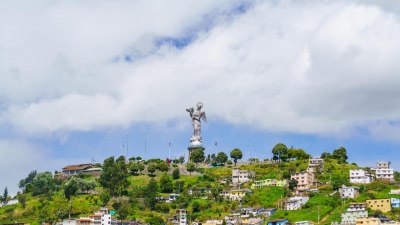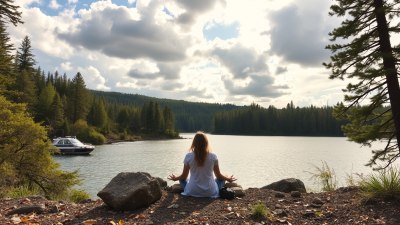How Not to Look Like a Tourist in Ten Steps
Master the art of blending in with locals while traveling to enhance your experiences and avoid tourist traps.

When traveling to new destinations, the last thing many people want is to stand out as a tourist. The key to truly experiencing a new place lies in blending in with the locals. Here, we present ten important steps on how to not look like a tourist, allowing you to immerse yourself in the local culture while enjoying your travels.
1. Research Local Customs
Before you set off on your trip, research the customs and etiquette of the country you're visiting. Different cultures have unique traditions that influence daily life. Understanding local greetings, dining etiquette, and dress codes can help you avoid unintentional faux pas. For example, in Japan, a simple bow may be the appropriate greeting, while in Italy, it's common to kiss on the cheek. Familiarizing yourself with these nuances will not only help you fit in but will also earn you respect from locals.
2. Dress Appropriately
Your choice of clothing can significantly impact how you're perceived. Avoid wearing clothing that screams 'tourist,' such as branded t-shirts, fanny packs, or huge sun hats. Instead, observe the locals and try to dress similarly. In many European cities, for instance, stylish yet casual attire is the norm. Pay attention to colors, styles, and even footwear to blend seamlessly into the crowd. Keep your outfit practical yet fashionable, allowing for comfort while exploring.
3. Learn Basic Phrases
Making an effort to learn a few basic phrases in the local language can work wonders. Greeting someone in their native language can create an instant connection and shows respect for their culture. Even simple phrases like “hello,” “thank you,” and “please” can go a long way. Additionally, being able to ask for directions or read menus in the local language enhances your travel experience. Language barriers can make you feel like a tourist; learning a few words shifts the dynamic towards being a traveler.
4. Use Public Transportation
Instead of relying solely on taxis or tour buses, opt for public transportation like metros, trams, or buses. This not only helps you save money but also allows you to experience the daily life of locals. Observing how residents commute, interacting with fellow passengers, and visiting off-the-beaten-path neighborhoods can enrich your travel experience. Moreover, public transport often takes you to lesser-known destinations that are not on typical tourist itineraries.
5. Avoid Tourist Traps
Tourist traps are designed to attract the masses, often lacking authenticity and often more expensive than local alternatives. Instead of visiting popular attractions that are overcrowded with tourists, seek out hidden gems that offer a more genuine experience. Look for local markets, small cafes, and lesser-known museums where you can engage with the culture and its people. Online forums, blogs, and local guides can help you discover these spots.
6. Connect with Locals
Engaging with local residents enhances your travel experience and helps you blend in more naturally. Strike up conversations with shopkeepers, waitstaff, or people you meet along the way. Many locals love to share their insights, recommend restaurants, or point out attractions that may not be in guidebooks. Use social media platforms or travel apps to connect with locals who offer insights into their neighborhoods or host cultural exchanges, making your travel experience more memorable.
7. Be Mindful of Your Surroundings
One of the easiest ways to look like a tourist is by being oblivious to your surroundings. Keep your head up, avoid staring at your phone for directions, and take in the sights and sounds around you. When exploring an area, walk with purpose and confidence, emulating the way locals navigate their neighborhoods. If you need directions, make an effort to engage with locals instead of using your device, reinforcing your interest in experiencing the surroundings more authentically.
8. Dine Like a Local
Steer clear of restaurants in tourist areas that cater primarily to visitors, often serving overpriced and subpar food. Instead, opt for eateries favored by locals. Look for places with no English menus or where patrons are mostly from the area. Dining where locals eat gives you a taste of authentic cuisine and a more immersive cultural experience. Try sharing plates, enjoying regional specialties, and being open to trying new dishes, as food is a significant component of cultural identity.
9. Capture Moments Respectfully
While taking photos is an essential part of traveling, be discreet and respectful in your photography, especially in local neighborhoods or markets. Avoid taking pictures of individuals without permission, as it can be intrusive. Capturing candid moments can provide beautiful memories, but always approach locals respectfully and ask first. This builds rapport and shows your genuine interest in their lives.
10. Maintain a Positive Attitude
Finally, maintaining a positive attitude throughout your travels helps you connect with locals and enhances your experience. Being flexible, open-minded, and courteous will go a long way in bridging cultural gaps. Embrace spontaneity; unexpected moments often provide the best travel stories. Laugh off minor inconveniences, as they make for great memories. The local culture will appreciate your enthusiasm and kindness, and you'll likely leave a warm impression, proving that travelers can truly respect and enjoy their surroundings.
By following these ten steps, you'll not only navigate your travels more confidently but will also foster genuine connections with the places you visit. Remember that the goal of travel is not just to check items off a bucket list but to engage with cultures, create memories, and fully appreciate the diversity of our world. Stay curious, respectful, and open, and you will undoubtedly have an enriching travel experience that goes beyond the typical tourist pitfalls.











